Issue 44
Nat Bloch Gregersen
Weathering
Stones are made of natural, non-living chemical substances called minerals. Minerals are made of ninety-two
elements that are composed in different ways. Some minerals are made of only one element, such as silver.
However, most contain crystals of two or more elements. For example, granite is made of quartz, feldspar
and mica.
Granite is a group of magmatic rocks that are formed under the continents at great depths and under high
pressure.
I read the landscape from right to left.
The sun is setting. The pebbles move back and forth in tune with the waves.
There are three different types of stone: Magmatic, sedimentary and metamorphic. A rock begins as one type and
can change many times. A step in the stone's cycle can take thousands of years.
The stone in my pocket presses against my thigh.
Crystal stone has smooth surfaces called faces.
When the waves are broken against the edge of the beach, air is whipped into the water and create foam. You
like to make bubbles by pressing the spit back and forth between your teeth. I spit on the ground and small
clumps of sand grains and white bubbles are formed. After a while they dry out, I crumble them between my
toes. I do not hate you.
Pumice stone is porous lava, which is formed by chilled lava cream. They are created during volcanic eruption
by explosions inside the lava column when a particularly high pressure of gas is present. When the lava is blown
out by gases during the eruption of the volcano, cavities of gas bubbles are formed inside the stone itself.
The pumice stones can float in water and draw paths over several kilometres on the seabed.
I grab the stone and pull it out of the pocket. I press it against my lips and I feel the teeth behind them. I slip
it past the teeth and into my mouth. It must be so dark in there, in my stomach. I swallow and find myself in
a cave. The walls and the ceiling are covered in salt crystals. Here I will lick my wounds. I pull my hands and
arms along the cobbled walls of the cave, back and forth. The crystals rub against my sticky palms; my arms
have found a rhythm now. Like a cows tongue licking a salt stone, slowly carving its own self care.
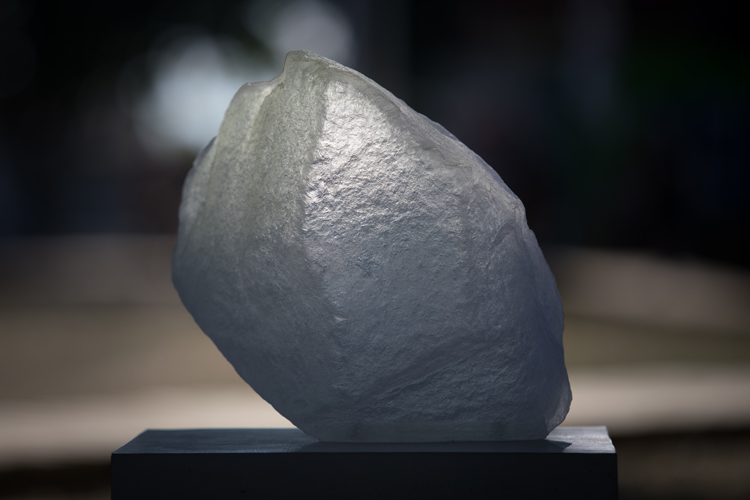
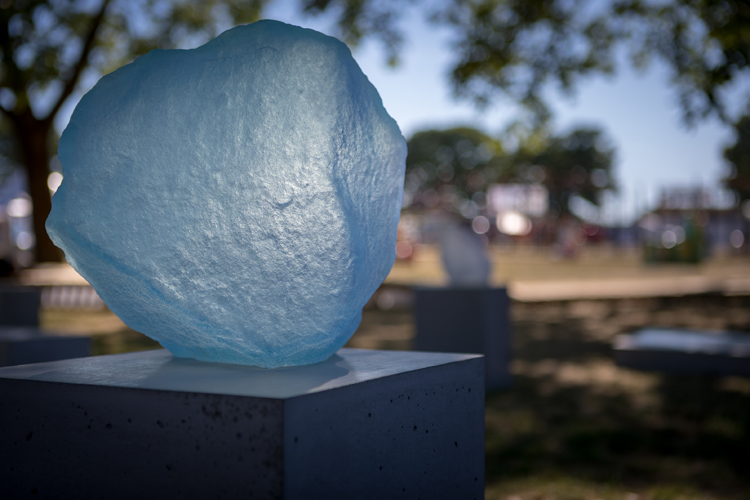
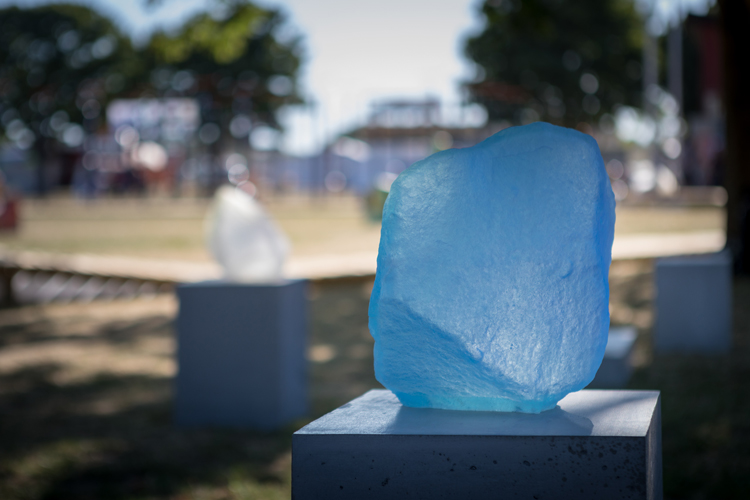
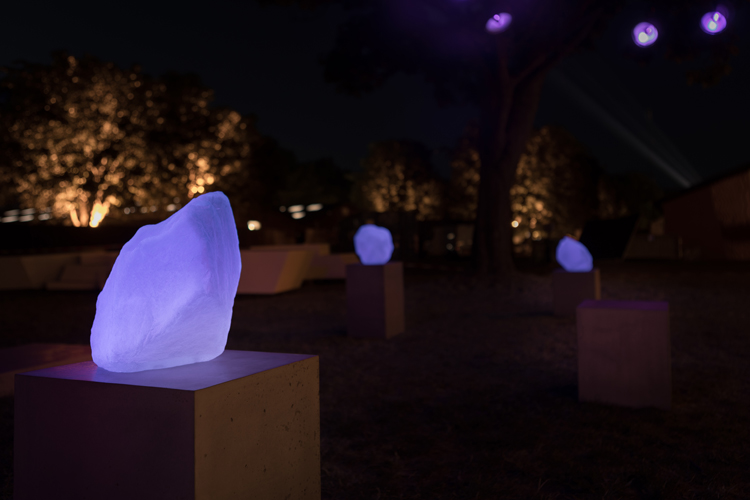
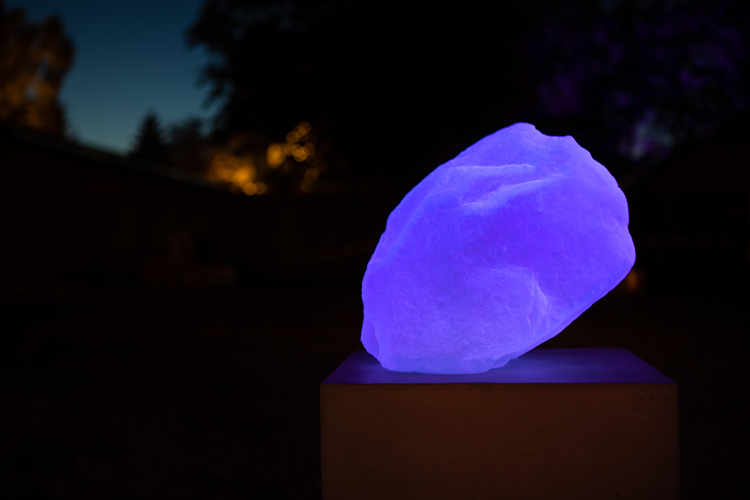
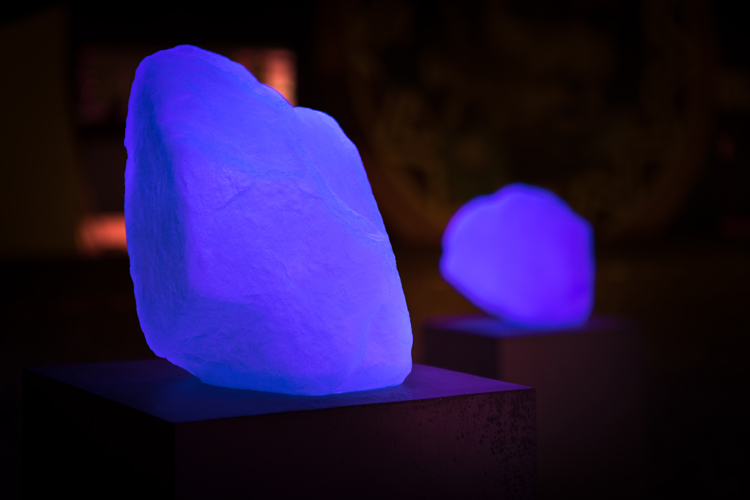
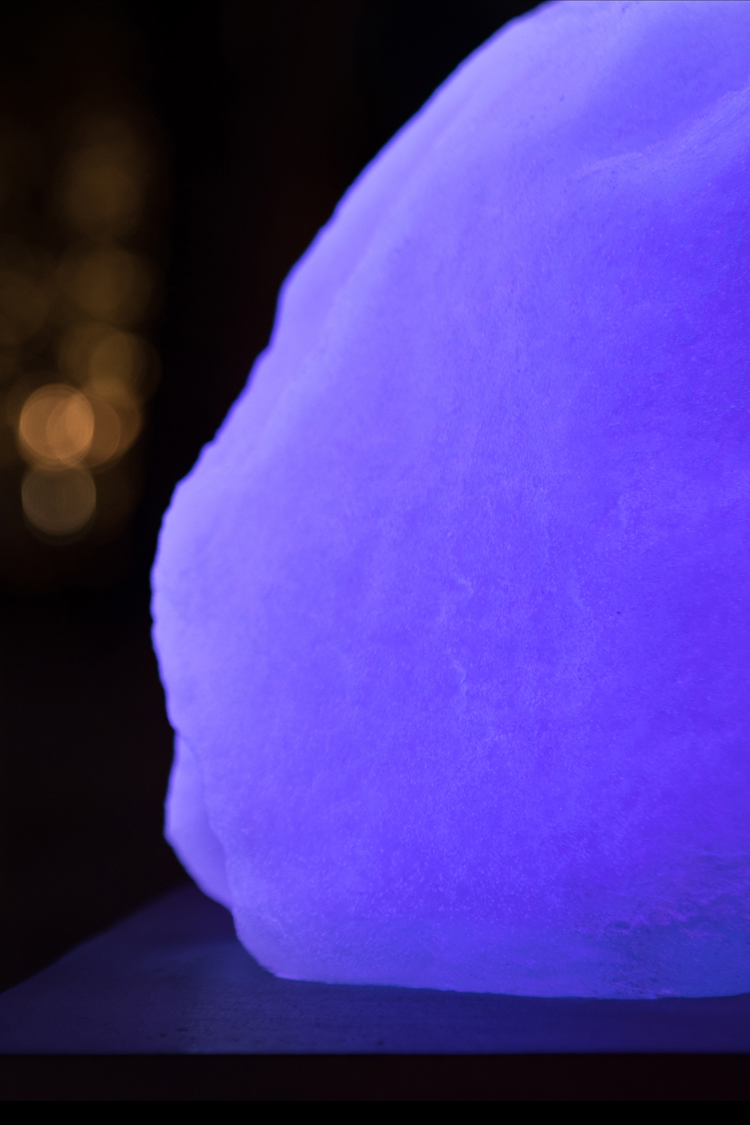
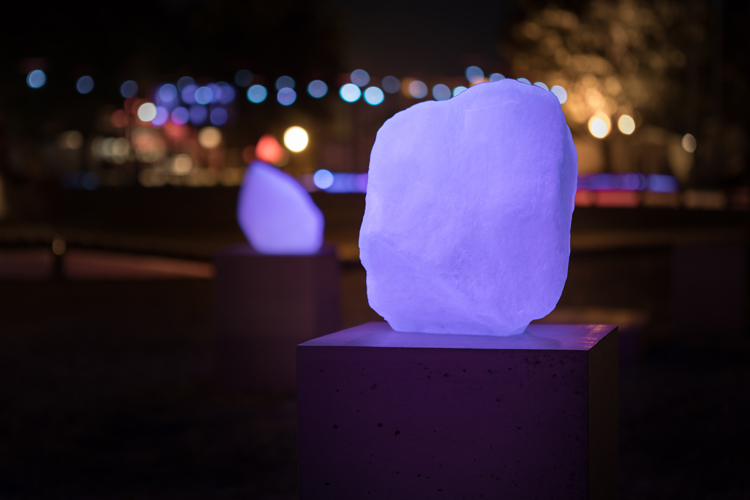
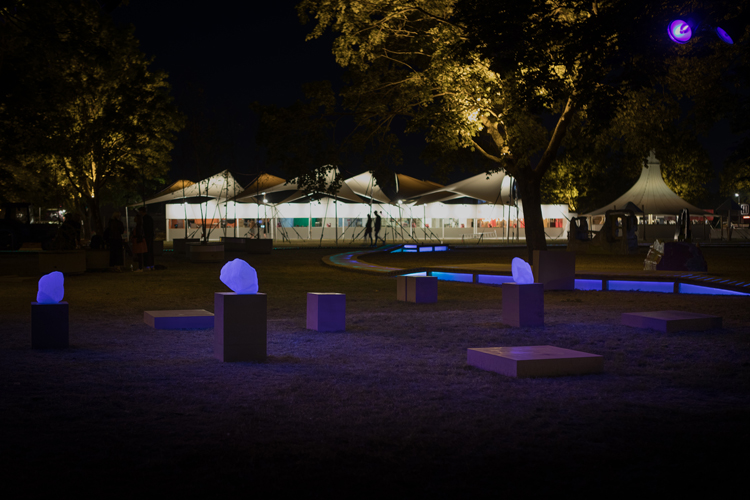
The images (1-9) shows the work 'Synthetic Collection: Stones (VII)' presented on-site at Roskilde Festival, Art Zone, 2018.
The stone sculptures are castings of natural stone (1: 1) in transparent polyurethane and are included in the series of work
'Synthetic Collection: Stones'. The concrete counters function as a seating installation and invites the viewer to spend
time by the sculptures. In daylight the sculptures appear semi-transparent, and at night they are transformed into a fluorescent
light installation.
The text is an edited version of a text performed at the opening ceremony of Art Zone.
The project is supported by the Bikuben Foundation and Roskilde Festival.
Photo Credit: Silas Emmery